Sandpit play is a fun and engaging activity for kids. It allows them to explore their environment, develop their physical, emotional, and imaginative skills, and engage in a variety of play activities. In this guide, we will explore 10 creative ideas for designing a sandpit that is both safe and exciting for kids of all ages.
Creative Sandpit Ideas for Kids
Here are some of the best sandpit ideas for your little ones to have fun with. Hr sports offer sandpit toys for your children at an affordable price in Australia.
Classic Sandpit:
A classic sandpit is a simple, rectangular pit filled with sand. This type of sandpit is a great starting point for those who are new to sandpit play. To create a classic sandpit, start by selecting a level area of your yard. Next, dig a hole to the desired size and shape, and add sand to the pit. You can then decorate the sandpit with toys, such as shovels, pails, and molds, to encourage imaginative play.
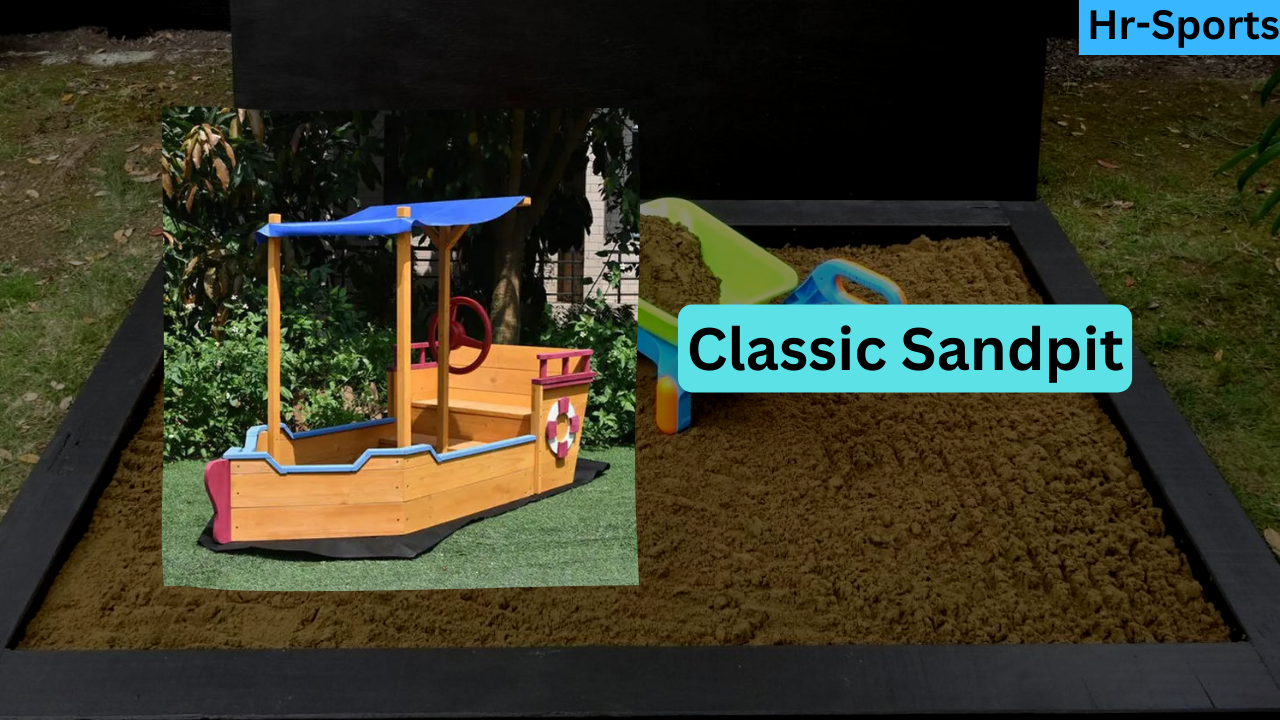
To enhance the classic sandpit, consider adding a small slide, a water feature, or a shady canopy. These additional features will add an extra level of excitement and engagement for kids.
Themed Sandpit:
A themed sandpit is a sandpit that has been transformed into a specific environment, such as a beach, jungle, or farm. To create a themed sandpit, start by selecting a theme that appeals to your kids. Next, add props, signs, and decorations that relate to the theme. For example, if your theme is a beach, you might add beach chairs, umbrellas, and shells.
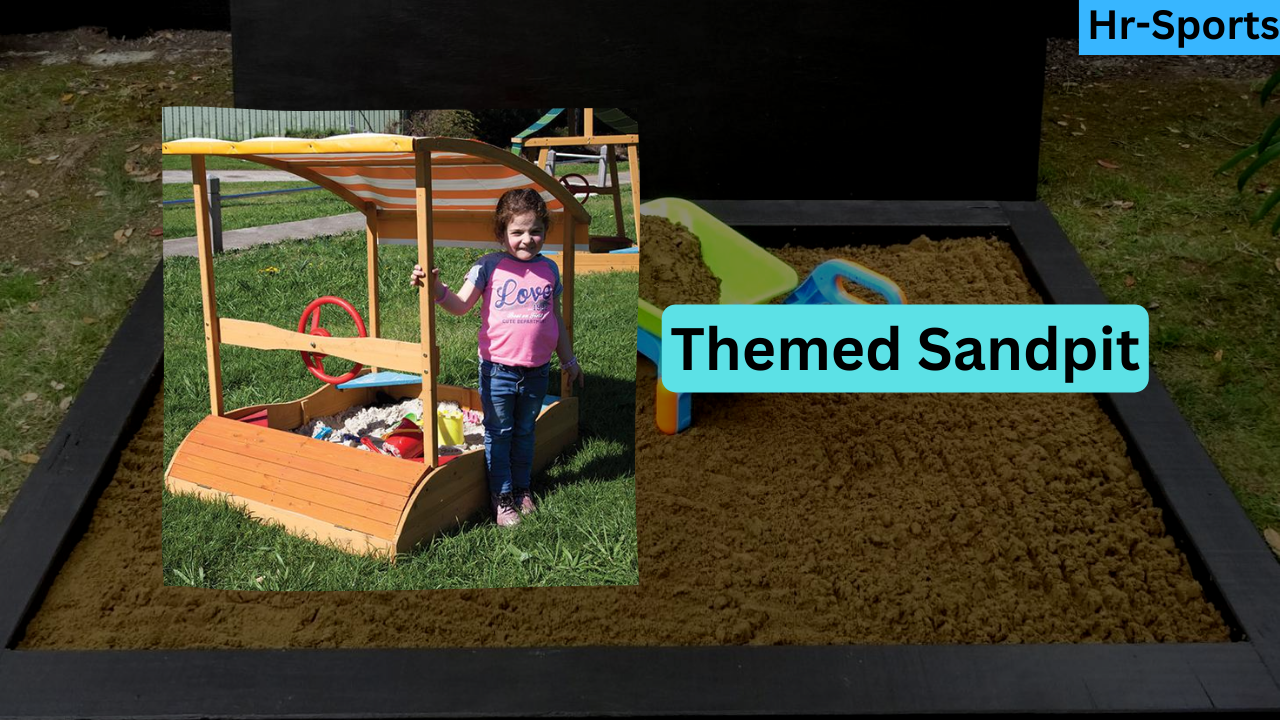
To enhance the themed sandpit, consider adding sensory elements, such as sand that smells like coconut or ocean, or colorful sand that mimics a rainbow. These sensory elements will help kids engage their senses and enhance their imaginative play.
Natural Sandpit
A natural sandpit is a sandpit that is surrounded by natural elements, such as plants, stones, and logs. To create a natural sandpit, start by selecting a level area of your yard that is surrounded by natural vegetation. Next, dig a hole to the desired size and shape, and add sand to the pit.
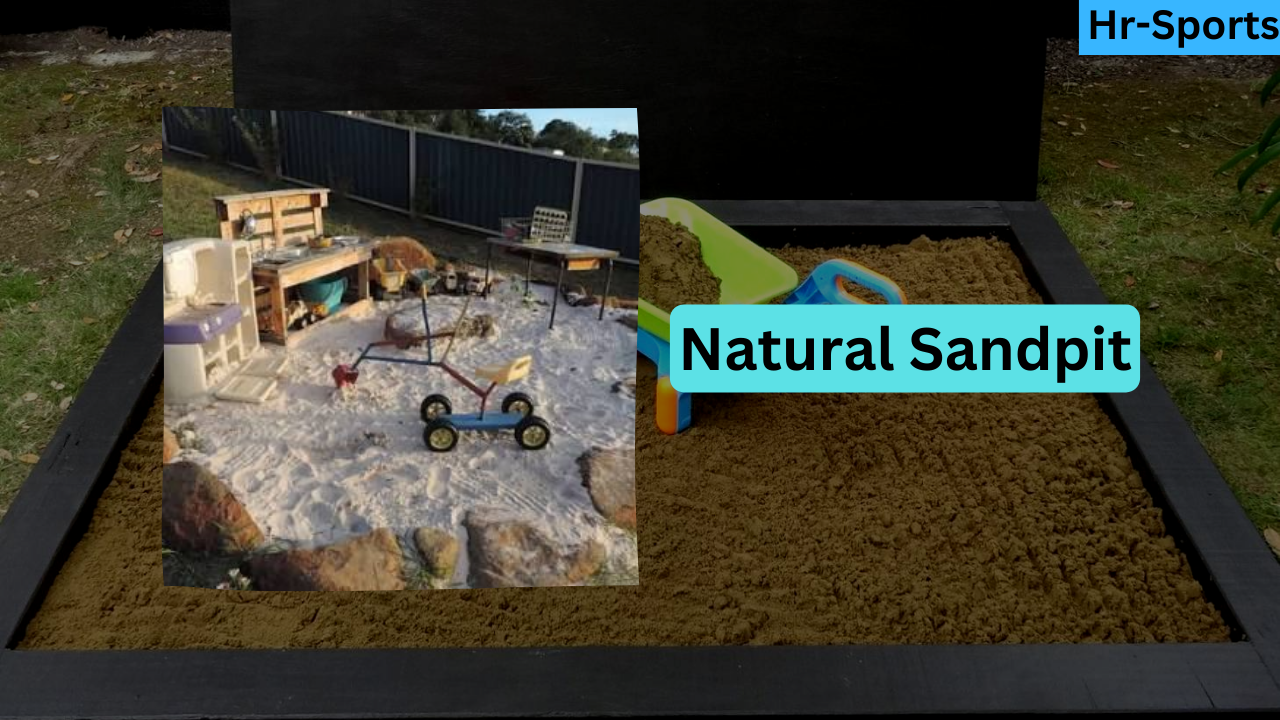
To enhance the natural sandpit, consider adding elements of nature, such as leaves, shells, and sticks, to the pit. This will allow kids to explore the natural environment and develop their sensory awareness through the sandpit.
Adventure Sandpit:
An adventure sandpit is a sandpit that includes tunnels, bridges, and towers, encouraging physical activity, coordination, and problem-solving skills. To create an adventure sandpit, start by selecting a level area of your yard. Next, dig a hole to the desired size and shape, and add sand to the pit. Then, build tunnels, bridges, and towers out of wood, PVC pipe, or other materials.
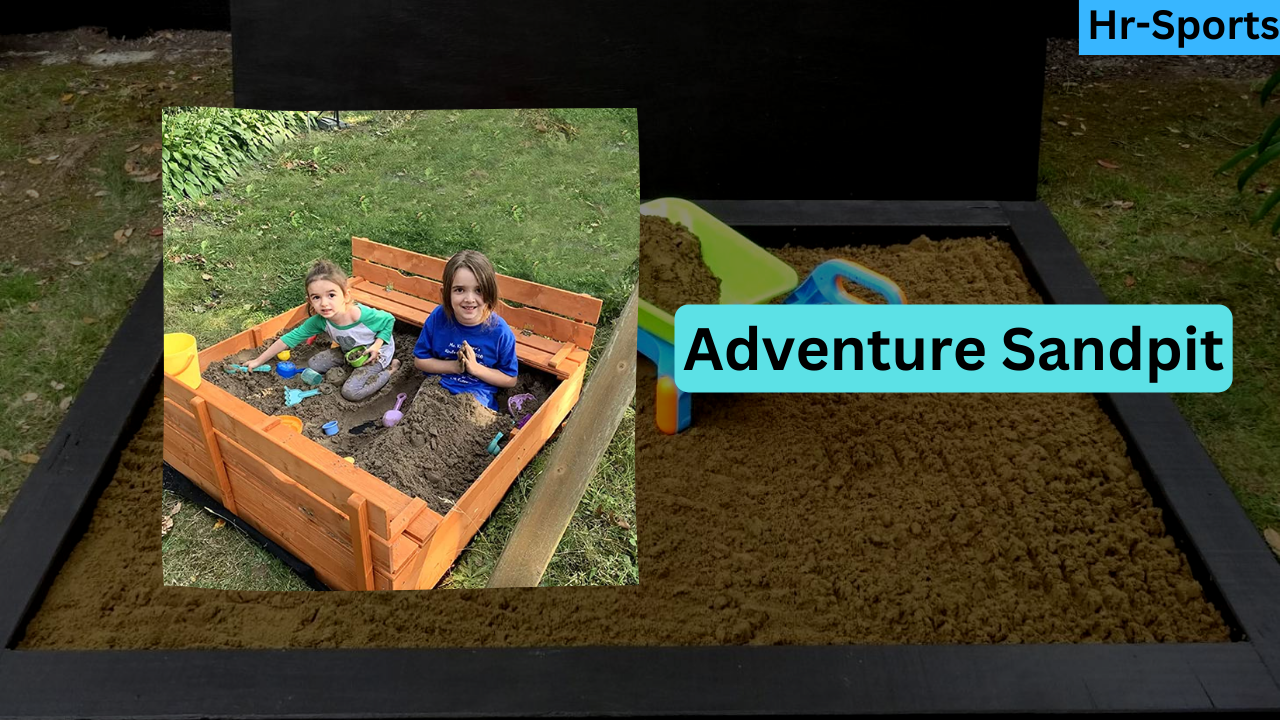
To enhance the adventure sandpit, consider adding challenges, such as obstacles and treasure hunts, to keep kids engaged and entertained. This type of sandpit will encourage kids to be active and use their imaginations.
Water Sandpit:
A water sandpit is a sandpit that includes a small pool or stream. To create a water sandpit, start by selecting a level area of your yard. Next, dig a hole to the desired size and shape, and add sand to the pit. Then, create a small pool or stream by digging a shallow trench and adding water.
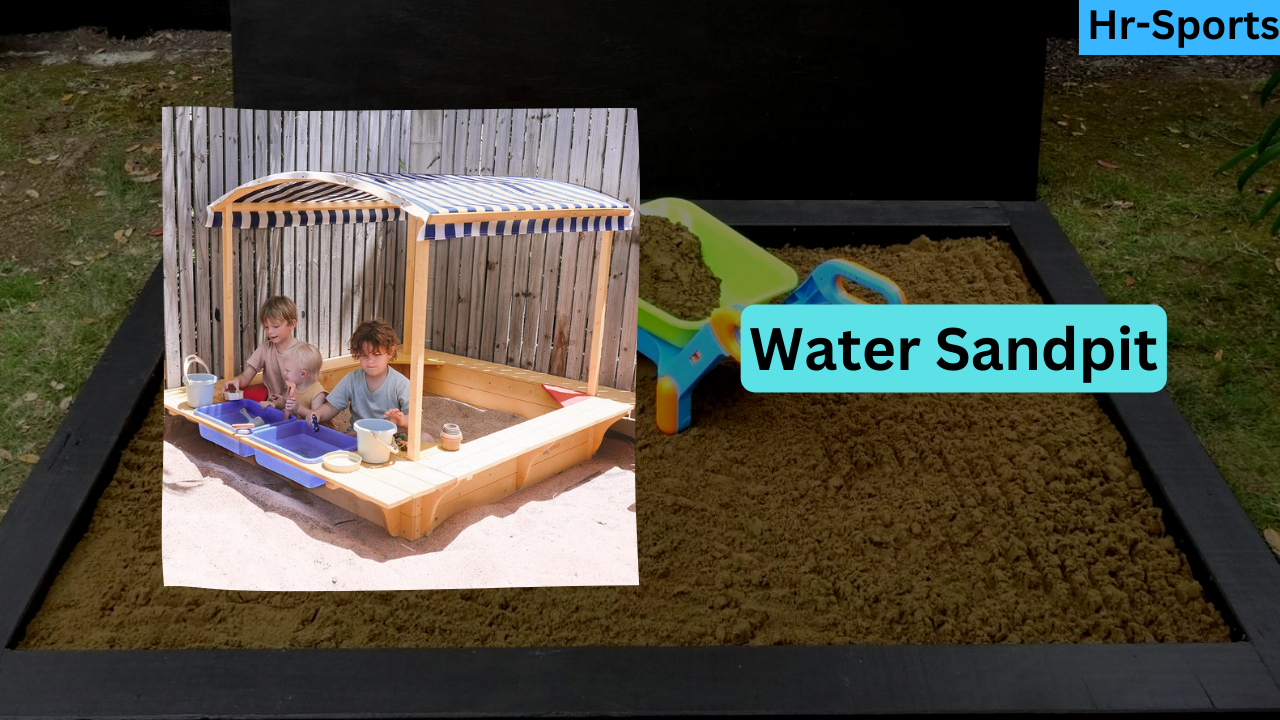
To enhance the water sandpit, consider adding toys and tools, such as boats, water wheels, and water pumps, to encourage imaginative play and learning about water and its properties.
Sensory Sandpit:
A sensory sandpit is a sandpit that includes sensory elements, such as colored sand, scented sand, and different textures of sand. To create a sensory sandpit, start by selecting a level area of your yard. Next, dig a hole to the desired size and shape, and add sand to the pit.
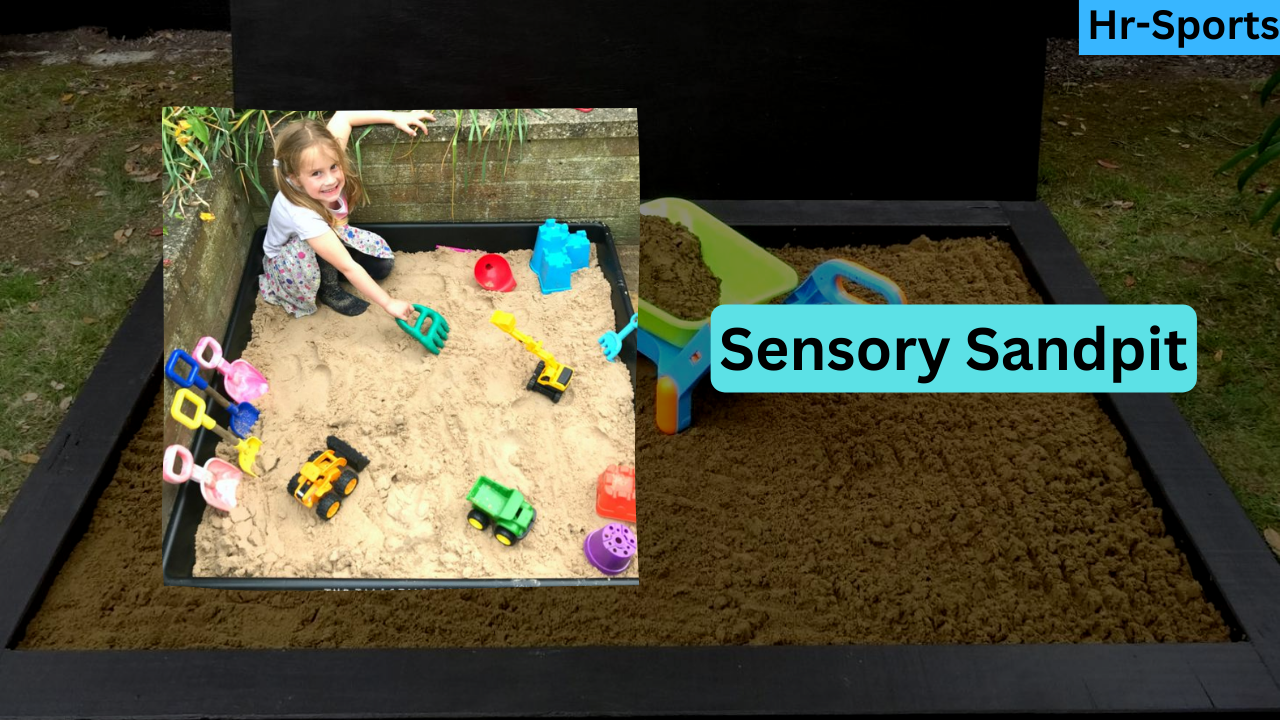
Then, add different elements of sand to the pit, such as colored sand, scented sand, and sand with different textures. To enhance the sensory sandpit, consider adding sensory toys, such as sand sifters, scoops, and molds, to encourage imaginative play and sensory exploration.
Musical Sandpit:
A musical sandpit is a sandpit that includes musical elements, such as percussion instruments and music-making toys. To create a musical sandpit, start by selecting a level area of your yard. Next, dig a hole to the desired size and shape, and add sand to the pit. Then, add musical toys, such as drums, maracas, and xylophones, to the pit.
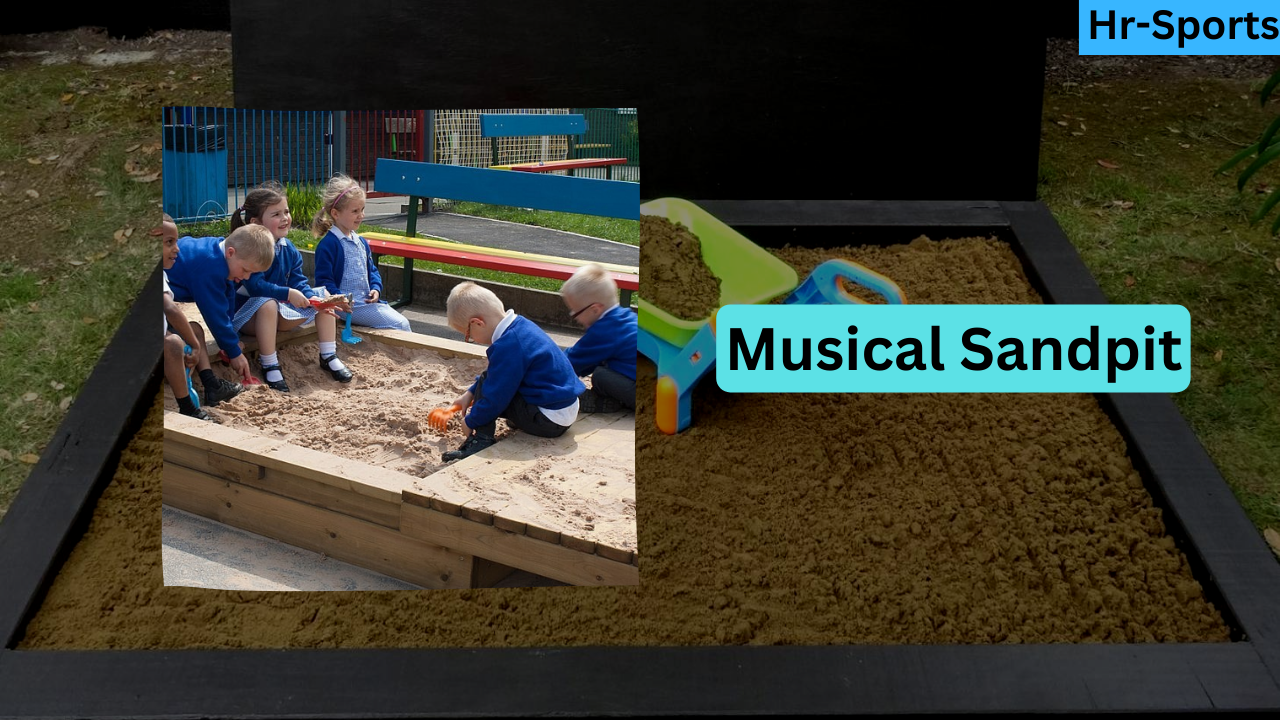
To enhance the musical sandpit, consider adding a small stage or performance area, where kids can showcase their musical skills. This type of sandpit will encourage kids to be creative and explore their musical interests.
Garden Sandpit:
A garden sandpit is a sandpit that includes a small garden or greenhouse. To create a garden sandpit, start by selecting a level area of your yard. Next, dig a hole to the desired size and shape, and add sand to the pit. Then, create a small garden or greenhouse by adding soil, seeds, and a plant stand.
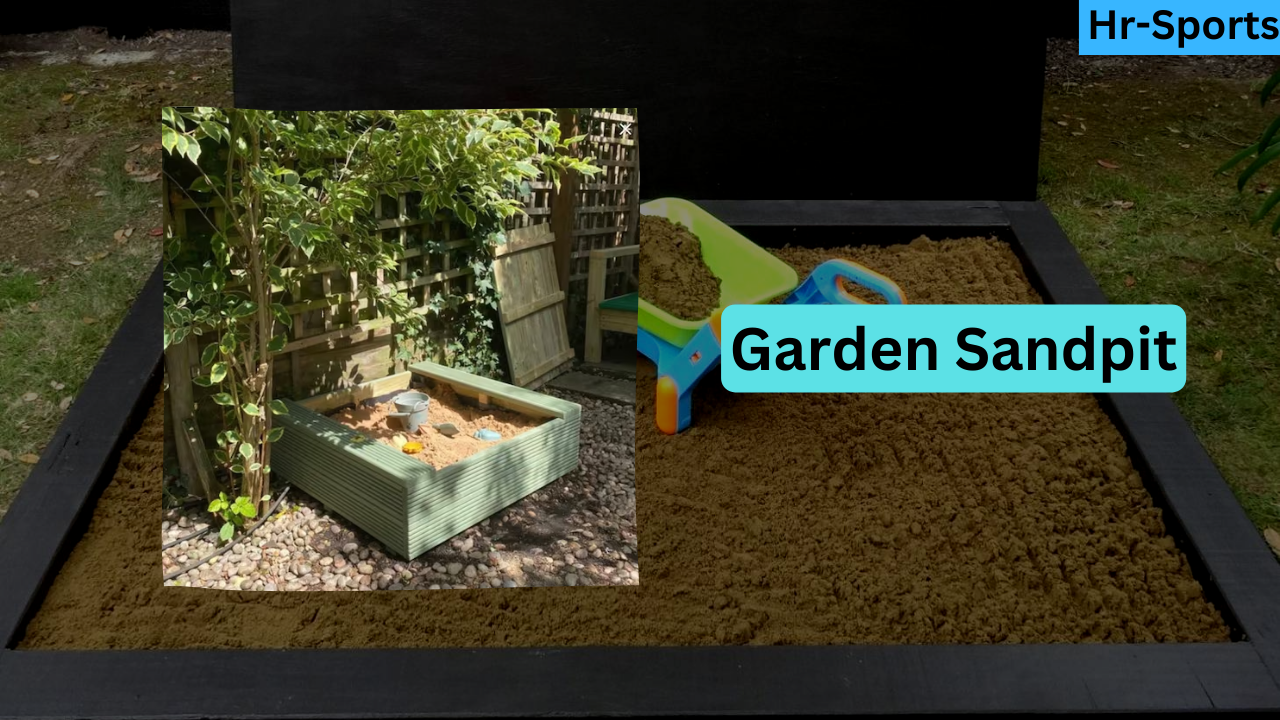
To enhance the garden sandpit, consider adding tools, such as watering cans, trowels, and gloves, to encourage imaginative play and learning about plants and gardening.
Night-Time Sandpit:
A night-time sandpit is a sandpit that includes lighting elements, such as lanterns, strings of lights, or glow-in-the-dark sand. To create a night-time sandpit, start by selecting a level area of your yard. Next, dig a hole to the desired size and shape, and add sand to the pit.
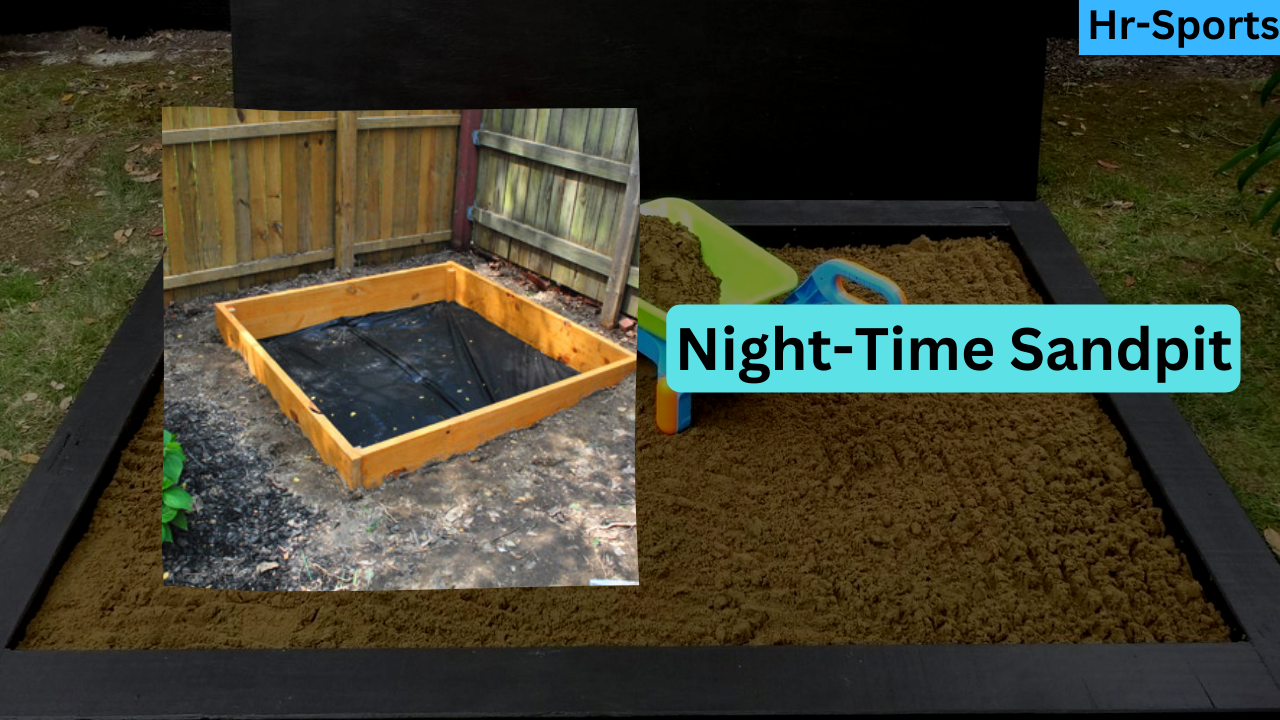
To enhance the night-time sandpit, consider adding night-time activities, such as stargazing or telling ghost stories. This type of sandpit will encourage kids to explore the nighttime environment and use their imaginations in a different way.
Benefits of Sandpit Play for Kids
Here are some of the benefits and advantages of sandpit play for kids. Improve your children's skills while playing in the sand pit.
Fine Motor Skills Development: Sand play is a great way for children to strengthen their fine motor skills. Scooping, pouring, and molding sand requires the use of their hand and finger muscles, which helps prepare them for more complex tasks such as writing and manipulating small objects. Sand play also provides an opportunity for children to practice their hand-eye coordination and dexterity.
Sensory Development: Playing in the sand is a sensory experience that can help children develop their sense of touch, sight, and hearing. The sensation of feeling the sand and its texture is important for a child's sensory development. They can also hear the sound of the sand when they pour it, dig or jump in it, which helps develop their auditory sense.
Imagination and Creativity: Sand play provides an open-ended opportunity for children to use their imagination and creativity. They can create their own worlds and build structures, such as sandcastles, tunnels, and moats, which allows them to express their thoughts and feelings. Sand play also gives children a sense of control over their environment, which can boost their confidence and self-esteem.
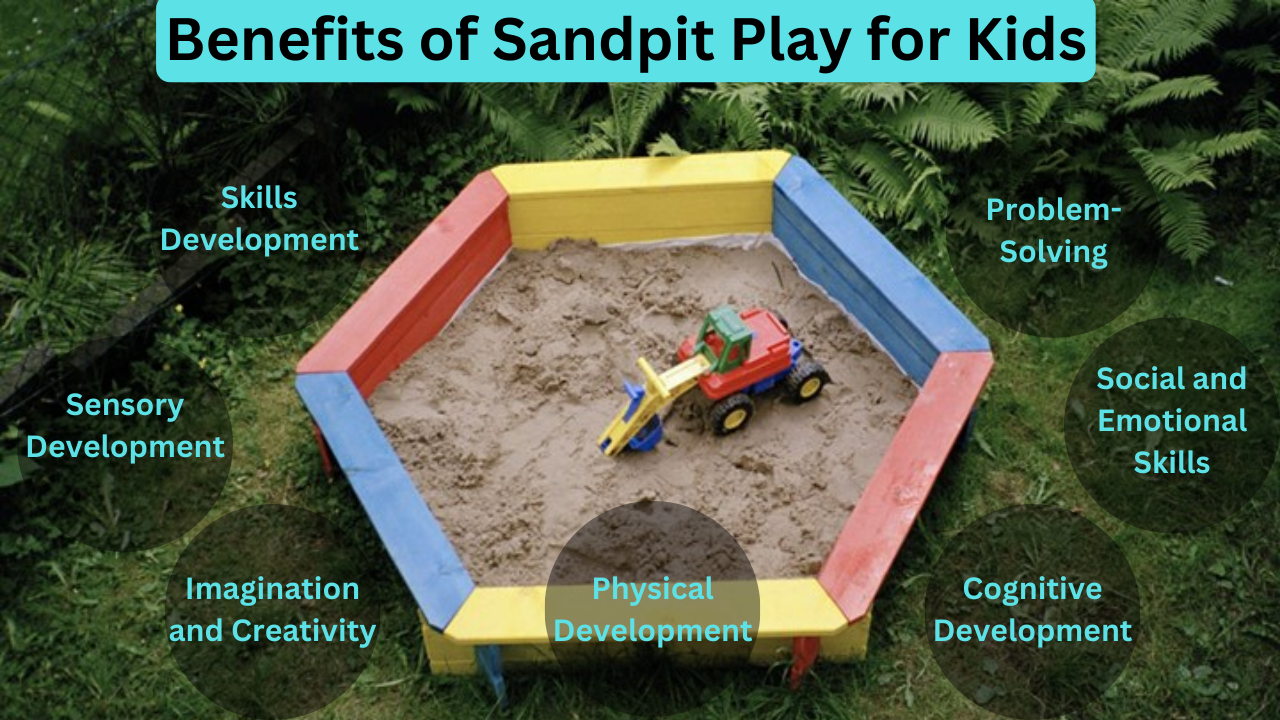
Problem-Solving: Sand play can also encourage problem-solving and critical thinking. Children may need to find solutions to problems such as how to keep their sandcastle standing, how to make a tunnel, or how to make a wall. These experiences help them develop their problem-solving skills and critical thinking abilities.
Social and Emotional Skills: Sand play can also help children develop their social and emotional skills. Children can learn to play and share with others, as well as work together on a shared project. Sand play also gives children the opportunity to explore their emotions, such as joy, frustration, and excitement, in a safe and controlled environment.
Cognitive Development: Sand play can also support cognitive development. Children can learn about cause and effect, size, weight, and measurement. They can experiment with different tools and materials to see how they interact with the sand, and develop their understanding of basic scientific principles.
Physical Development: Sand play provides an opportunity for children to develop their gross motor skills and coordination. Running, jumping, and digging in the sand can help children improve their balance, coordination, and overall physical fitness.
Playing in a sandpit can provide numerous benefits for children's development. From developing their fine motor skills, sensory abilities, imagination, and creativity, to enhancing their problem-solving and social and emotional skills, the sandpit offers a fun and interactive way for children to learn and grow.
How to Maintain Your Sandpit: Cleaning and Upkeep Tips
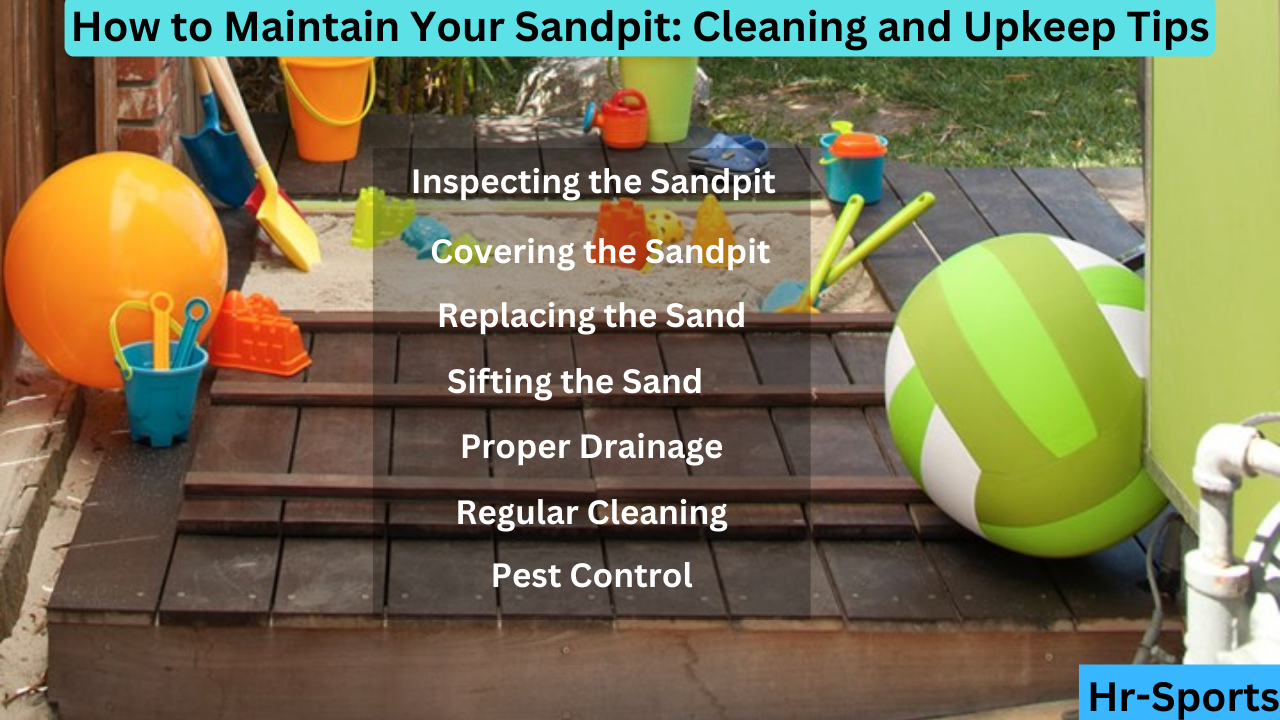
Regular Cleaning: It's important to clean the sandpit regularly to keep it safe and hygienic for children to play in. Use a shovel or rake to remove debris, such as leaves, twigs, and other litter. Also, remove any large stones or sticks that may pose a hazard to children.
Sifting the Sand: Sift the sand every few months to remove any dirt, pebbles, or other particles that may have accumulated. This will also help prevent the growth of bacteria and other harmful microorganisms.
Replacing the Sand: Depending on the frequency of use and the local weather conditions, it may be necessary to replace the sand in your sandpit every few years. This will help maintain the quality of the sand and ensure that it remains safe and hygienic for children to play in.
Covering the Sandpit: Covering the sandpit with a tarp or canopy when not in use can help protect it from the elements and keep it clean. Make sure to secure the cover tightly so that it doesn't blow away.
Pest Control: Keep an eye out for pests like ants, spiders, and other insects that may make their way into the sandpit. If you notice any pests, take steps to control them, such as using an insecticide or setting up a barrier.
Inspecting the Sandpit: Regularly inspect the sandpit to ensure that it is safe and secure. Check for any signs of wear and tear, such as cracks or holes, and repair them promptly. Also, check the surrounding area for any hazards that may pose a risk to children, such as sharp objects or trip hazards.
Proper Drainage: Make sure that the sandpit has proper drainage to prevent water from accumulating and becoming stagnant. This will help prevent the growth of harmful bacteria and other microorganisms.
What is a sandpit?
A sandpit is a shallow hole or container filled with sand that provides children with a fun and interactive place to play and explore. Sandpits can be found in public parks, playgrounds, or private backyards.
What are the benefits of playing in a sandpit for children?
Playing in a sandpit provides numerous benefits for children, including improving fine and gross motor skills, promoting creativity and imagination, and encouraging social and emotional development.
How do I maintain my sandpit?
To maintain your sandpit, you should clean it regularly, sift the sand every few months, replace the sand as needed, cover the sandpit when not in use, control pests, inspect the sandpit regularly, and ensure proper drainage.
How do I make my sandpit safe for children?
To make your sandpit safe for children, make sure to inspect it regularly for any hazards, such as cracks or holes, and repair them promptly. Also, check the surrounding area for any sharp objects or trip hazards, and control pests that may make their way into the sandpit.
What kind of sand should I use in my sandpit?
The best kind of sand to use in a sandpit is play sand, which is a specially-made sand that is free of harmful chemicals and safe for children to play in. Avoid using sand from natural sources, as it may contain rocks, sticks, or other debris that could pose a hazard to children.
Conclusion:
Sandpit play is a fun and engaging activity for kids. By incorporating creative ideas into your sandpit design, you can encourage imaginative play, sensory exploration, and physical activity. Whether you prefer a classic sandpit, a themed sandpit, or a night-time sandpit. There is a design option that will appeal to kids of all ages. So, get creative and start building your dream sandpit today!







